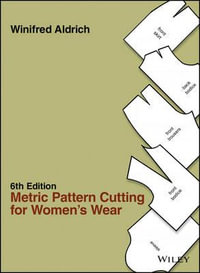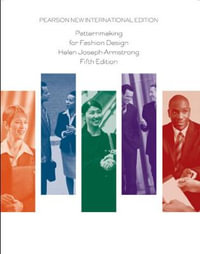CONTENTS LIST: 1. The Projects (building in complexity, each project to have made-up samples photographed in different fabrics to aid in fabric choice and using the different modular elements to personalise style and increase skill level): * Fishtail skirt - Techniques covered: centred zip, bias binding, gathering. Modular elements: patch pockets. * Jersey maxi skirt / dress - Techniques covered: sewing knit fabrics, gathering. Modular elements: length options, adding extra seams. * Jersey top - Techniques covered: sewing knits - finishing edges. Modular elements: adding extra seams. * Simple boxy biker style jacket - Techniques covered: sleeves, exposed open-end zip, bias binding. Modular elements: collar, patch pockets, additional seams. * Loose trouser (jersey fold over waistband / woven legs) - Techniques covered: sewing knit fabrics, pleats. Modular elements: side seam pockets, length options. * Shift dress - Techniques covered: centred zip, pleats, darts, understitching. Modular elements: optional sleeve, collar, side seam pocket, adding extra seams. 2. Basic Techniques (a section to refer to when working on the projects, this section needs a comprehensive contents page): * Seams - ways to neaten edges - how to get accurate, straight seams, including sewing and neatening curved seams. * Simple centred zip. * Exposed / open-ended zip. * Bias binding - used as a trim / used as a facing. * Gathering. * Pleats. * Hems. * Darts. * Setting in sleeves. * Understitching (facings). * Cutting - to include explanations of straight grain, selvedges, bias, etc (including knit fabrics). * Taking measurements and how to relate to size charts for patterns in book, include body measurement size chart in this section, each project has its own finished garment measurement chart. Include an explanation of ease here. * Sewing knit fabrics - seams / hems / edges / cutting. 3. Modular Elements (optional techniques that could be applied to the projects to personalise and customise and increase skill level): * Adding additional seams to the patterns in order to mix fabrics. * Flat collar. * Standing collar. * Side seam pockets. * Patch pockets. 4. Resources - where to buy fabrics and haberdashery suitable for the projects described. 5. Glossary - a list of the different kinds of fabrics, their best uses (i.e. Simple styles, draped styles, will it be warm fabric to wear, how would you care for the finished garment - would it be washable, etc) and their advantages and disadvantages.












































